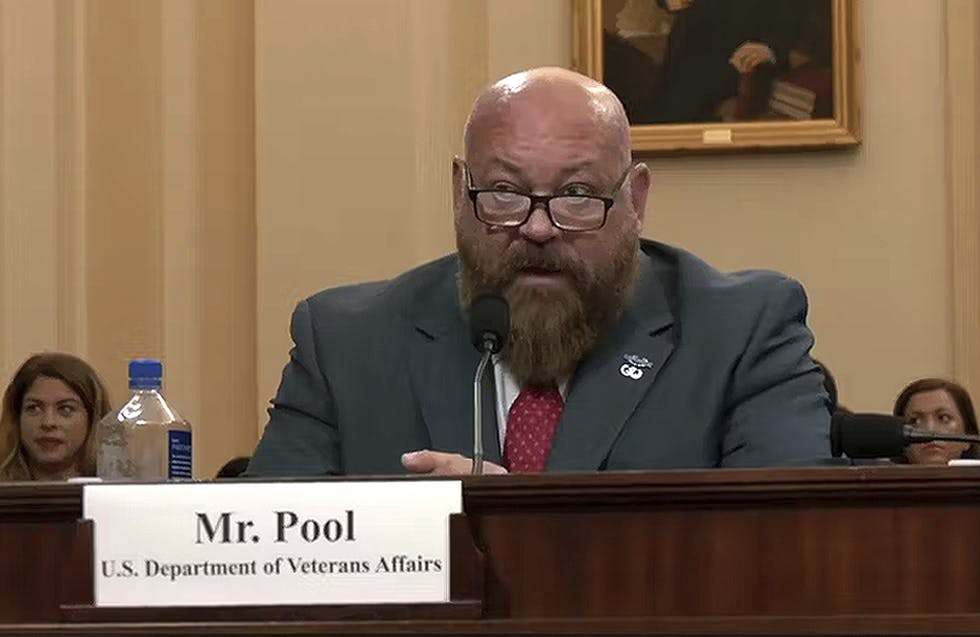What Will a Post-Digital Government Look Like?
Analysts say the next phase of digital transformation will incorporate mission-focused and empathetic design in the age of AI.

With artificial intelligence on the horizon, governments of tomorrow will build off the digital innovations of today with human-centered design and closer alignment to agency missions in an age that some industry analysts are calling the post-digital government.
The idea is simple. A digital government saw initiatives that created web-based capabilities like online forms and app development. A post-digital government takes that to the next level by shifting to a mission-first instead of technology-first approach.
“It’s about building on top of it. It’s about shifting that focus to be able to look at mission impact,” said Dean Lacheca, VP analyst at Gartner, during the Gartner IT Symposium in Orlando, Florida, Tuesday.
The comments come just hours after Gartner analysts opened the conference directing CIOs to prioritize AI and, in particular, generative AI. With the technology poised to significantly impact workplace productivity and creativity, this makes AI adoption evermore important for government.
“Everyone will have access to the same tools, and it will not provide a sustainable competitive advantage. Everyday AI is the new table stakes,” said Mary Mesaglio, distinguished VP analyst at Gartner, in a keynote address.
It’s a tool gaining more attention from federal leaders, including NASA Associate CIO of Applications Shenandoah Speers.
“Something that I’m very interested in looking at is the ability to have generative AI do the coding for you, do documentation for you, reverse-engineer legacy coding and be able to put it into a more modern language,” he told GovCIO Media & Research in a GovCast interview at the conference. “I think generative AI is a gamechanger across the board.”
However, organizations are behind in creating a clear vision for AI. That vision, Mesaglio noted, will require a shift in thinking in how humans and machines interact.
“A technology decision is not just a technology decision anymore. It is a technology, economic, social and ethical decision all at once,” she said.
The Case for Empathetic Design
Lacheca outlined three buckets that will drive much of the work in a post-digital government: empathetic service design, insight-driven-decisions and orchestrated ecosystems and platforms.
In recent years, federal agencies have long touted empathic, or human-centered, design. The Department of Veterans Affairs, for example, has made significant investments in the concept to improve how benefits are delivered to veterans.
“[Human-centered design] is one of those actionable things you can do really rapidly, and it does have a return on investment,” Lacheca said. “One of the immediate returns is the fact that it can really sharpen our focus on the problems we’re trying to solve.”
He described a post-digital government as one that performs “empathetic triaging” in case management for social services, for example. It also includes ideas like measuring a solution’s success based on how the solution improves outcomes, not just processes.
Driving Decisions with Data
Data modernization is nothing new in government. The demand for data-driven decisions has reached the upper echelons of the federal government because of incapacities only realized during the 2020 COVID-19 pandemic, when public leaders needed to make decisions at the speed necessary during a public health emergency.
The CDC’s recent organizational overhaul is part of the agency’s broader effort addressing that problem. It aims to modernize and better serve the public with real-time data.
NASA also is instituting plans for data advancements as part of its digital transformation strategy.
“Data is king,” Speers said in the GovCast interview. “All decisions should be made around data.”
Data modernization in a post-digital government, Lacheca said, will comprise layering intelligence from multiple sources to create value — where AI will make great impacts for processing that intelligence and support decision-making.
In the case of public safety or justice missions, this could look like combining digital twins and AI to predict response plans to police incidents or natural disasters.
This layering concept underpins a State Department-supported effort using digital open-source investigation to document and assess the impacts of Russia’s war on Ukraine. The work has led to the successful arrest of those involved in international war crimes including unlawfully transferring children from Ukraine to Russia, in what has been reported to be toward Russian-controlled indoctrination programs.
The Evolution of Partnerships
This third bucket is where government struggles the most, Lacheca said. A post-digital government would need to work to bring multiple ecosystems together. This means creating new innovation hubs, connecting service providers and forging digital alliances that connect government solutions.
The main idea behind this is to gather the collective powerhouses to tackle specific mission challenges.
“So, the idea of saying, ‘how do I create an environment where I can actually work with the industry to help look at government problems?’ is one of those emerging areas of opportunity,” he said.
He pointed to smart cities as an example of this concept in action.
“They’re creating new alliances with … platforms around [internet of things] environments, they’ve connected different local governments to share common platforms, and then connected those platforms with third parties,” he said.
“Digital government is not going away. It’s not about saying we need to throw away what we’ve done in the past. It’s really about saying, where do we go from here?” he added.
Stay tuned next week for the full GovCast interview with NASA Associate CIO of Applications Shenandoah Speers.
This is a carousel with manually rotating slides. Use Next and Previous buttons to navigate or jump to a slide with the slide dots
-

NSF Wants Industry Driving Quantum Innovation
The agency is pushing for partnerships to enhance the research community as Congress weighs additional legislation.
3m read -

White House Science Chief: US-Driven AI Sets Global Standards
Michael Kratsios outlined how American AI technology on the global stage will help standardize the tech and counter China’s influence.
5m read -

Modernizing Critical Infrastructure in the Face of Global Threats
Officials are expanding the latest strategies in boosting defense infrastructure, including securing satellite communications, upgrading enterprise-wide technology, optimizing data management.
20m watch -

Trump AI Orders Call for Speed in Building Infrastructure
The directives call for expanding AI infrastructure, streamlining federal permitting and promoting AI exports.
4m read -

DOD Accelerates Software Modernization with Agile DevSecOps Push
The Pentagon's software implementation plan tackles cultural hurdles and integrates security early to deliver critical capabilities faster.
6m read -

White House Unveils AI Action Plan to Secure Global Dominance
The strategy outlines steps to accelerate private sector innovation, build critical infrastructure and advance U.S. leadership in AI policy and security.
3m read -

VA's Platform One Powers Rapid Innovation to Bolster Digital Services
VA's Platform One accelerates software development timelines from weeks to hours, ultimately enhancing digital services for veterans.
5m read -

Doing More with Less is Muscle Memory for IRS, Former Deputy CIO Says
Darnita Trower discusses her experience, the legacy she’s left behind and how she pushed the IRS to modernize itself,
20m watch -

Opinion: Original Intelligence Is the Missing Piece for AI Transformation
Limitations of AI agents and development drive growing needs for workforce development and "original intelligence."
3m read -

VA CIO Targets Modern IT and Smarter Workforce Alignment
Agency leaders told lawmakers they are focused on trimming legacy systems and restructuring its workforce to streamline operations.
3m read -

Pentagon's $200M AI Contracts Signal Broader Effort to Transform Talent
The Army is leveraging Silicon Valley, reservist programs and new hiring strategies to integrate critical digital skills in its ranks.
5m read -

AI Foundations Driving Government Efficiency
Federal agencies are modernizing systems, managing risk and building trust to scale responsible AI and drive government efficiency.
43m watch
















